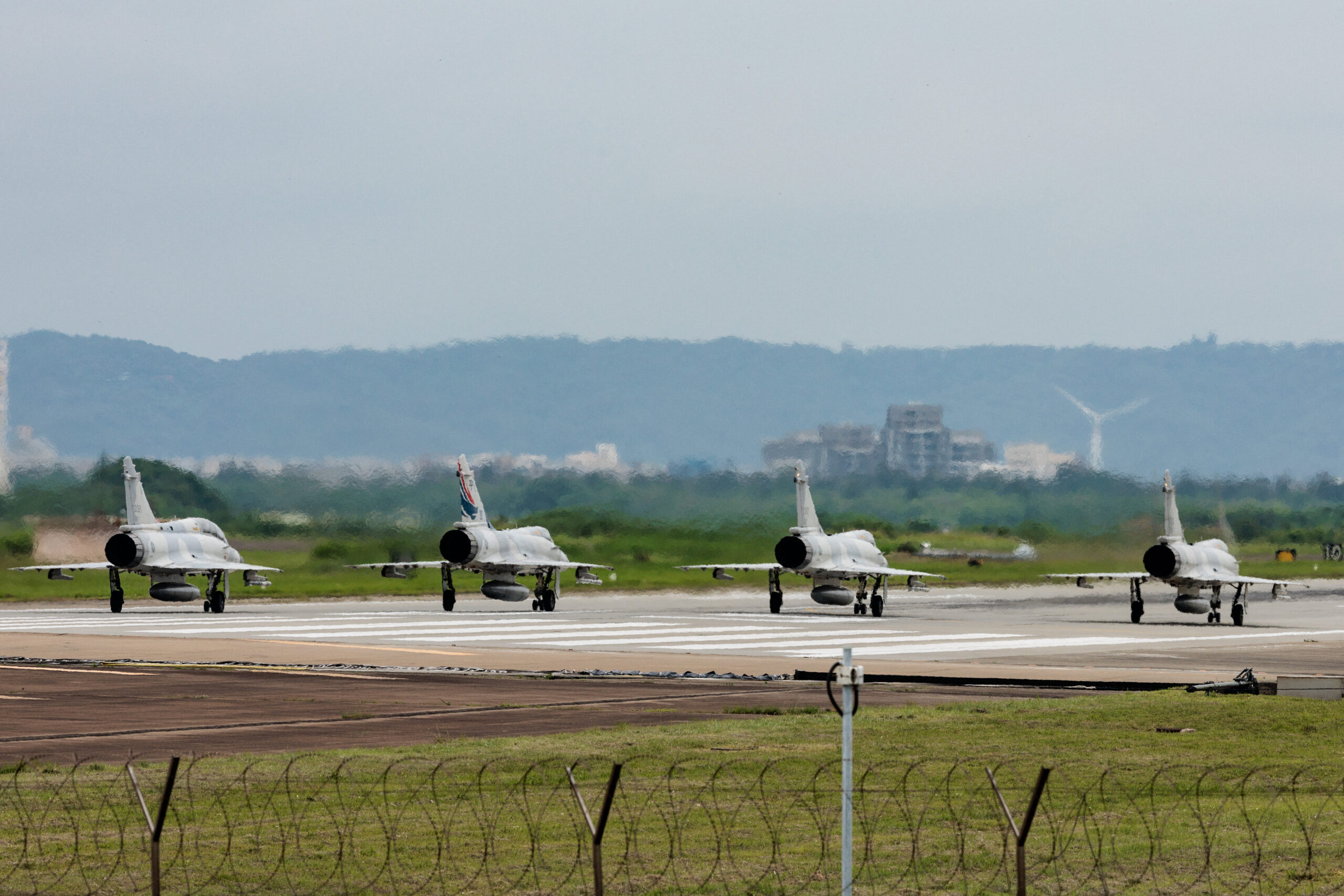Taiwan’s military, coast guard activate in response to China’s drills

Taiwanese air force Mirage 2000 fighter jets wait for take off at a base in Hsinchu in northern Taiwan on May 23, 2024. – China on May 23 encircled Taiwan with naval vessels and military aircraft in war games aimed at punishing the self-ruled island after its new president vowed to defend democracy. Agence France-Presse
TAIPEI — Fighter jets took off from a Taiwan airbase Thursday as the self-ruled island dispatched aerial and naval forces in response to China’s launch of military drills, while Taipei’s coast guard warned off Chinese vessels.
Beijing commenced two days of war games, dubbed “Joint Sword-2024A”, as a “strong punishment” for Taiwan’s “separatist acts”.
They come after the island swore in new President Lai Ching-te, who said in his inaugural speech on Monday that Taiwan “must demonstrate our resolution to defend our nation”.
READ: China holds military drills around Taiwan as ‘punishment’
China — which claims Taiwan as part of its territory — has denounced Lai’s speech as a “confession of independence”.
Beijing’s drills began at 7:45 am (2345 GMT Wednesday) and are taking place in the Taiwan Strait and to the north, south and east of the island, PLA Eastern Theater Command Naval Colonel Li Xi said.
“In response, ROC (Republic of China, Taiwan’s official name) Armed Forces have dispatched our aerial, naval and land assets in accordance with our protocols,” Taipei’s defense ministry said in a statement.
Four fighter jets took off at around 1 pm from a military airbase in Hsinchu, an hour southwest of Taipei.
Self-ruled Taiwan is separated by a narrow 180-kilometer (110-mile) strait from China, which has said it would never renounce the use of force to bring it under Beijing’s control.
READ: Taiwan: China military drills ‘irrational provocations’
Taipei’s coast guard said it had encountered Chinese ships around the Taiwan-administered outlying islands of Dongyin and Wuqiu early Thursday morning.
Two Chinese coast guard ships had sailed into the “restricted waters of Dongyin” at 7:48 am, while another was outside the restricted zone to “provide support”, Taipei’s coast guard said.
The ships left waters off Dongyin — around 160 kilometers from Taiwan’s northern tip — about an hour later.
Another two Chinese ships were detected around Wuqiu, about 130 kilometers from Taiwan’s western coast, “entering restricted waters”, with a third outside the restricted area, the coast guard said. The vessels left at around 8:45 am.
Footage released by the coast guard showed Taiwanese officers ordering Chinese ships to leave over a loudspeaker.
“Your movements affect our country’s order and safety, please turn away and leave our restricted waters as soon as possible,” an officer said, according to the coast guard video.
“Leave right away, leave right away!”
The incidents near Dongyin and Wuqiu marked the seventh time this month that Chinese vessels breached Taiwan’s restricted waters.